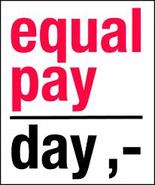Social Media Reaches Strategic Level
 Its Everywhere Yesterday, we were assisting a client with their Strategic Plan, using our Strategic Achievement Index© system support tool. The tool helps organizations establish priorities, timelines and measurement methods for those critical goals that will drive the organization forward over a period of time. Our system helps the client focus on the critical components of their operation and defines the specific projects that will support the stated measurable goal for each component. Historically, we see components such as Finance, Human Resources, IT, Operations, Customer Service and Sales/Marketing or perhaps Capital Development in no-profit organizations. In the sales and marketing component the focus is frequently on reaching a particular sales volume, a certain penetration of a business sector, setting up a new sales compensation system etc. However, we are seeing a new emphasis in recent months. The number of projects that involve some form of social media strategy is gaining a much higher profile. It is being viewed on a level similar to new processes or products.
Level of Understanding
In our client meeting it was certainly seen as a critical tool and there was acceptance that it would play an important role in meeting major organization goals. The interesting aspect of the meeting discussion was how each member of the committee was using the tools and their level of understanding on how to use the various elements of social media. This client is a non-profit organization, so the committee members came from a variety of organizations, each with different applications and various degrees of understanding. But they were all involved with it. Clearly the concept of social media had arrived and was to be instrumental in this strategic plan.
 Increasing your Knowledge We see the application on many fronts in our work with Human Resources Consulting and have decided it is notable enough that we have included it in our up-coming event Ask-the-Pros Q&A Forum. In the event, clients and other interested business owners and those in leadership positions get to ask questions of our pros in the four disciplines of Social Media, Legal, Insurance and Human Resources. Should be an interesting evening. No costs, no lecture, no sales pitch, just information.
Equal Pay Day For All?
 Last week we had ‘ Equal Pay Day’ as an official day to recognize variations in pay between men and women. www.dol.gov/equalpay. So I’d like to comment on the matter as a person involved with the issue for many years. I choose not to say how many, for fear you might discriminate against me, a person in a protected class. This a no-brainer and an issue that should have been put to bed a long time ago. It doesn’t matter whether we are talking about women or minorities or maybe even in the two tier pay systems that are developing as companies are trying to get costs under control to remain competitive in an international market. The basic issue is fairness that seems to be raised in just about any context, whether we are talking about pay, taxes, being in the 1%, job opportunities, profiling for speeding tickets or airport security. The issue happens because a new group of people come into play, or a new circumstance develops that must be considered. Almost in any case the solution of how it is handled becomes the critical factor. People want to be handled in the same manner as those perceived to have the better circumstance. Those who do have the better circumstance believe they earned it and programs designed to bring equality are ‘give-aways’ and not fair.
 Solution So is there a solution? Maybe not, or at least not one that is 100% acceptable to everyone. However, I believe there are some critical steps that might be in the right direction in every case. 1. Admit there is a problem 2. Commit to resolving the issue 3. Determine a reasonable timeframe for implementing the solution. 4. Concentrate on the transition process. (This is the one most often over looked) For example in the case of unequal pay. If pay is distributed based on a standard process that is tied to the same base for all employees (not their salary), over time the inequities will be minimized. Starting salaries for women or minorities may be different based on what they bring to the job, but what they do on the job has to be viewed impartially and paid accordingly. That becomes fair, and over time you achieve equality. HELP ME – HELP YOU Got a good and fair solution – please share it. Perhaps we can add it to our up-coming Comp Basics program under construction.
Governor Snyder says we have his attention!
 Workability In Michigan is an organization of volunteers from a variety of professions who share the common goal of preventing needless work disability and helping people stay employed. Recently, a team of volunteers with Workability in Michigan (WIM) sent a letter to Governor Snyder. The intent was to draw his attention to the mission and resources available through WIM, and push for action to bring a heightened awareness of Return to Work / Stay at Work initiatives that will save Michigan and Michigan businesses hundreds of thousands of dollars. The Governor responded, and at light speed. The WIM volunteer team was told “you have the Governor’s attention” within hours of submitting the letter. The next step for WIM is to coordinate with the State of Michigan to become a good example of how to manage disability better with state employees. Once that process is under way, WIM will work with the state to promote best practices in managing disability to businesses within the state. The intended result is the State, as one of the largest employer in Michigan, takes the lead in cutting enormous costs and brings significant credibility in championing the initiatives. For more information on Workability in Michigan, go to http://www.workabilityim.org.
Ford Museum Health Care Presentation 4-11-12
 Highly Informative Last night I attended the Ford Museum presentation Health Care: What We Want, What We Need & What We Can Afford. The presenters, who expressed “opposing” views, and the moderator, were all very knowledgeable well credentialed people. The program was very interesting and informative, as you would expect. Of course it centered on the Patient Protection and Affordability Care Act (PPACA) (http://en.wikipedia.org/wiki/Patient_Protection_and_Affordable_Care_Act) and associated Supreme Court legal process. As background they discussed the history of how we got to this point; a long torturous route. Each side quoted surveys and analysis that supported their point of view. Ever the less, it was of value to hear both sides presenting their case with more than just sound bites. I of course believe the presenter that supported my views had the most valid arguments. However, the other presenter did get me thinking about some of the other side’s position. So that is a good thing.
 The Audience
But perhaps the most interesting part of the program resulted from the audience questions and the related responses. If I could sum up what I thought I heard was that folks want the issue of health care cost and services to be fixed. One presenter said surveys showed that most individual elements of PPACA are very popular and will likely be more respected once we get to 2014 when most elements “kick in”. This assumes it will still be constitutional. But the general impression is this is not good for the country as it stands. However, they feel that the real culprits in this process are the politicians. They have done a lousy job, special interests seem to be first consideration, and they are playing political games, rather than really trying to solve the problem.
 The Take Away
Each fix to the health care situation adds another layer of complexity, because we are not good at the issue of transition and we have the wrong priorities. The fix should be patients first, cost management second, institutions last and war after health. Applauds from the audience seem to support this strategy.
So, How About 'dem Ducks?

Time Is Passing, So, Get it Done!
What am I talking about? Preparing for the next stage in your life, that’s what! Younger people know the steps that are required, if they are going to make something of their life; study, go to the right school, do an internship, join the army for training or do an apprenticeship, etc. But once you start to work through the career, life sort of takes over and the planning stops. Then we get to middle age, whatever that is, and we begin to wonder what we are all about and maybe question earlier decisions. We may even think seriously about changing a few things. Generally these are pretty narrow in their focus.
The most typical broad focus change usually takes place when you retire. For many, the issue of retirement comes when you hit some milestone that triggers a financial lever, and you perceive you can get by without working. For some it is a medical matter that becomes the trigger. For few it happens when they have their “ducks lined up”. This latter group is pretty small. But, it doesn’t have to be.
 What Is The Strategy?
There are two methodologies:
1) Work on a “Bucket List”
2) Paint a Picture
The first strategy is often a bit fragmented, in that the items on the list may be unrelated. But it has good possibilities. You’ve identified a number of goals. That is the most important part. However it requires a few more things. The list has to be reviewed on a regular basis, at least annually, if not more frequent. It needs to be supplemented and culled as your interests change. Next you have to set priorities. Then you have to set a timeframe. Now, you have to put the plan in place: Line up your ducks.
 The second strategy, typically involves constructing a flushed out scenario of what the next phase of your life plan is going to look like. This is usually more integrated than the bucket list and therefore perhaps a bit more complicated, but not necessarily more difficult to achieve. It requires more up-front thought, and more vision. Following this “picture” it is necessary to fill in the particulars with objects, colors, and shading. Now that you know what it looks like, you follow the same methodology as the bucket list, review, modification, priorities on filling in the picture and timelines. Some people refer to this as pre-retirement planning. Perhaps that is a misnomer, it depends on the plan, and how you view what you have been doing for a number of years.
 Line up your ducks! Pre-retirement Planning
Is this a company program or your program? Smart people and smart companies integrate everyone’s elements and needs. My next article for the Grand Rapids Business Journal, will explore this topic in a bit more depth.
Medical Adventures Part III

Not all medical experiences are life or death options, but of course those are the ones that you hear about and they get your attention. When the medical event occurs outside your home area or perhaps outside your home country, it makes you stop and think about how much we take for granted. If it is a real emergency such as an auto accident or a heart attack, the local system, however structured, will usually kick in, and hopefully resolve the situation effectively.
When you don’t have a known Doctor to call and your medical degree is a bit lacking, what alternative do you have. We frequently hear about how “illegals” or those without insurance are driving up the cost of care, because their resource is always the emergency room of the local hospital. Perhaps this matter will be resolved as the Supreme Court works through the arguments regarding the Patient Protection & Affordability Care Act (PPACA). However, if you have insurance but you don’t want to go to emergency or you are in a location where the emergency room is not close, what do you do?
 Don’t forget this Option
If you have been following this blog, you know I’m in Costa Rica, so I, like many Americans these days, am getting exposed to a new set of rules when they leave the country. However, I’m also learning that maybe I can apply some of these lessons back home.
There is a link in the medical chain that I think many of us, often overlook. It is the pharmacy. For many of us the pharmacy is a place we go to pick up the pills or salves that our doctor or their nurse calls in. We don’t give full consideration to their training and never think of them as someone who can share their knowledge. In the US the rules for prescribing drugs are pretty strong and often prevent simpler and less costly solutions. However, on three different occasions, the local pharmacist came to the rescue.
One case involved curing a rather strong infection from stepping on an unforeseen insect. After working through a vague description of the insect, a salve, that immediately went to work, was prescribed by the pharmacist. In the second instance a guest became quite sick with a throat infection. The pharmacist again had the solution. Over-the-counter solutions are more available here and seem to be more effective, since they are frequently those that require a doctor’s prescription in the US. The last situation involved a guest that was a diabetic who used an insulin pump. The pump quit working during the visit. A replacement was shipped the same day, but overnight has a different meaning here. The backup solution was again the local pharmacy. The technical discussion was more demanding, but language was not a problem. The pharmacist had the proper sized needles and appropriate medicine.
 Think About It
Not sure if this is how we picture medicine to be in a “third world” country. We should know the practice of medicine comes in many forms. The important thing is the outcome, not the system. So my adventure has taught me that one part of the system, the pharmacist, should not be overlooked. You may not always know where to find the emergency room or an MD, but I’ll bet just about any where you are, you can find a pharmacist.
|

















 RSS Feed
RSS Feed